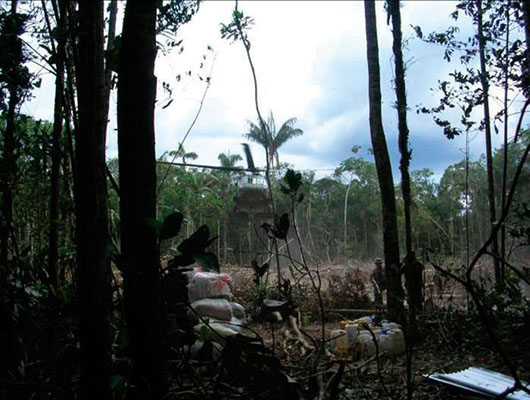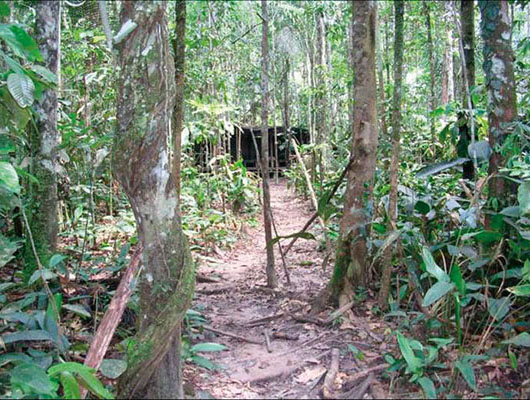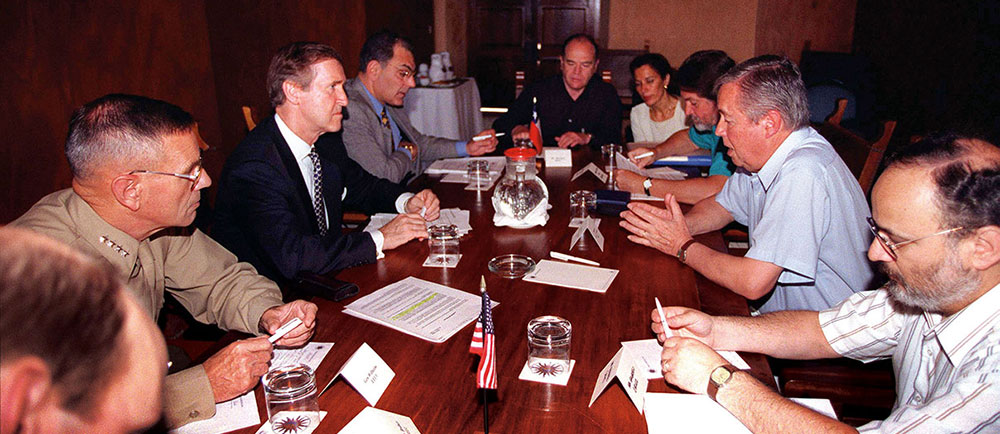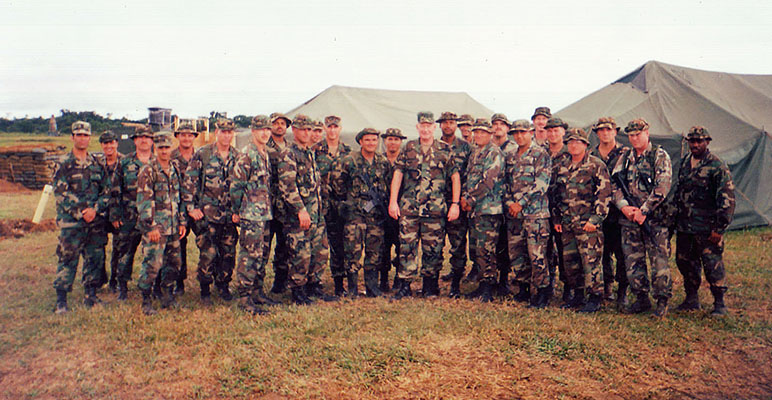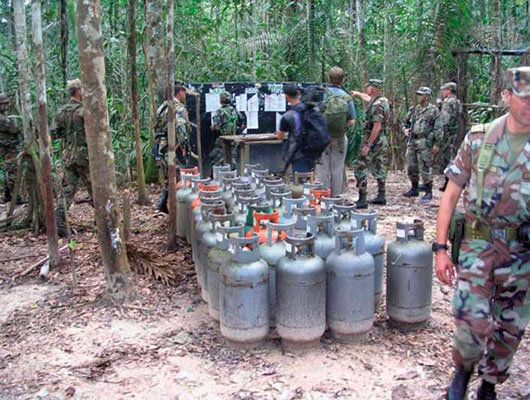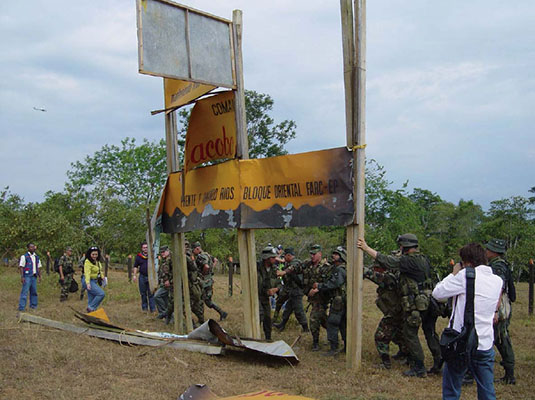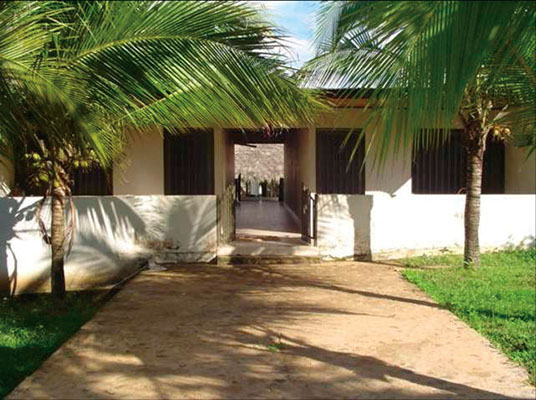DOWNLOAD
In more than fifty years of battling with anti-government insurgent movements, Colombia has used a number of strategies in an attempt to achieve victory. Plan Colombia and Plan Patriota are the latest plans designed to defeat the insurgency. The difference between Plan Colombia and previous campaigns is threefold. First, the scope is larger. Plan Colombia covers the entire country and is not limited to isolated enclaves. Second, it is a combined political, military, and economic effort as opposed to seeking a strictly military solution. Finally, there is the unprecedented level of support from the United States. This article will explain Plan Colombia and the follow-on Plan Patriota in the context of U.S.-Colombian relations. The historical roots of Plan Colombia date to the 1960s.
From 1948 to 1966, Colombia endured a harrowing period of internal strife known as La Violencia. More than 250,000 people were killed as warring political factions in the country vied for supremacy. Ultimately, a power-sharing arrangement known as the National Front alternated power between the Liberal and Conservative parties. In 1962, U.S. Army Brigadier General William P. Yarborough visited Colombia and helped draft a plan to quell the insurgency. Known as Plan Lazo, the fundamental elements were national to community-level civic action done in conjunction with aggressive counterinsurgency operations by the military and police. Plan Lazo helped the first two National Front administrations (1958–1966) end La Violencia. With the drawdown of most political violence, Bogotá policy makers reclassified the rural guerrilla movement as a criminal problem. This made the insurgency a law-and-order issue and gave the primary responsibility to the national police. The government increased the scope of the police mission without increasing its budget or force size. The focus of Colombia’s armed forces reverted to traditional national defense. Over the next decade, these conditions led to the re-emergence of insurgent groups. In the absence of an effective government presence to counter the guerrillas, self-defense forces were formed that provided vigilante-style law and order.
The first large scale attempt to defeat the insurgents was Plan Lazo in 1962. Rebel groups had established enclaves in the mountains. The enclaves became known as “independent republics,” operating beyond government control. Initial attempts by the police, and then the army, proved fruitless. The bandits and quasi-guerrillas fought back and maintained control of their areas. The conflict lead to an integrated operations plan named “Lazo.” (In Spanish a “lazo” is a rope, noose, or snare.) The plan called for operations to isolate the independent republics and then use military force to defeat the insurgent groups. While a military operation, Plan Lazo also had a civil component, one of national- and community-level rural development, civic action, and civil defense.

The final phase of Plan Lazo became “Operación MARQUETALIA,” the military operation to remove the so-called “Marquetalia Republic.” The military force was to destroy the social and military infrastructure established by Jacobo Arenas. This Colombian Communist tried to create a socialist commune or society, based on the examples of the Paris Commune in 1871 and the 1949 Chinese Revolution. The Marquetalia Republic was an 800–square kilometer area in the Andes Mountains located at 6000 feet above sea level and was well suited for defense.1 The Army focused a major offensive against the town of Marquetalia itself.
Following the military offensive, the surviving rebels and bandits managed to escape and scatter. The destruction of the independent republics led to the coalescing of several scattered groups and the formation of the FARC and ELN. In the 1970s, Colombia witnessed a rejuvenation of insurgency including the rise and fall of the M-19 as an urban group. Adding to the violence and discontent was the increase in narcotrafficking by the Cali and Medellín cartels. The chronically weak Colombian government was unable to control either the illegal drug trade or the growing insurgency.
Unfortunately, the U.S. attitude toward Latin America drifted into “benign neglect” until the 1980s. The United States was fully engaged in Vietnam and the Cold War in Europe. In the United States, the political and social upheaval of the 1960s and early 1970s only quieted down at the end of the Vietnam War. Latin America received little attention until the overthrow of the Anastasio Somoza Debayle regime in Nicaragua by Communist Sandinistas in 1979. In the case of Colombia, it was only when the Medellín and Cali drug cartels became the world’s leading cocaine suppliers in the mid-1980s that the United States focused on that country in a meaningful way. In the 1990s, a change of regime in Colombia brought a new strategy.
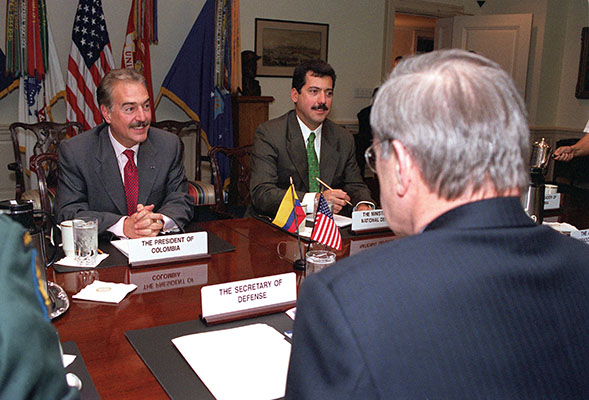
In 1998, after decades of violence and guerrilla warfare, President Andrés Pastrana Arango was elected—largely because he promised to seek peace with the insurgent groups. Pastrana’s advisors developed a plan entitled “Plan Colombia: Plan for Peace, Prosperity, and Strengthening the State.” President Pastrana presented “Plan Colombia” as “a set of alternative development projects which will channel the shared efforts of multilateral organizations and [foreign] governments toward Colombian society.”2 At $7.5 billion, the projected cost of the six-year Plan Colombia seemed enormous. The country sought outside assistance. Colombia pledged to provide $4 billion and asked the international community for the remaining $3.5 billion. The United States provided a $1.3 billion package of support, which included helicopters, equipment, and training, primarily from the U.S. Army Special Forces.3
A unique feature was that Colombian diplomats and military leaders came to Washington DC to garner support for the plan even before it was fully explained to the Colombian government. The Colombian leadership briefed Plan Colombia to Congress to gain not only the financial, but also the political support of the U.S. government. President Pastrana’s Chief of Staff, Jaime Ruíz, wrote the first draft in English, causing rumors that the plan originated in the United States. The Colombians received Congressional support. Responsibility for Plan Colombia was assigned to the Department of State (DOS). Implementation would take place through the U.S. Embassy in Bogotá.4
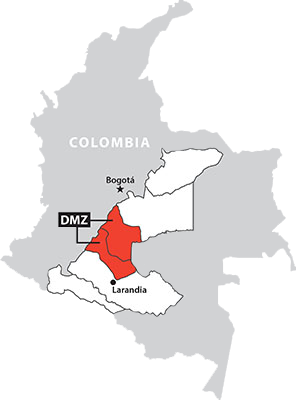
Part of President Pastrana’s plan was to hold peace talks with the Fuerzas Armadas Revolucionarias de Colombia (FARC). To demonstrate sincerity, Pastrana formed a demilitarized zone called the “despeje” (des-pah-hey), meaning “clear” or “open.” Here the FARC and the government of Colombia could have “breathing space.” Cessation of hostilities in the despeje would ostensibly allow all sides to come to the negotiating table to discuss peace and ultimately bring an end to conflict in Colombia.5
Pastrana’s concept, while well intentioned, did not work. The government of Colombia moved police and military units out of the designated despeje, but the FARC did not honor the agreement. Instead, the FARC used the cease-fire as a time to rest, refit, and build strength without the Colombian armed forces or police disrupting its activities. The “Switzerland-sized” despeje became a de facto country within Colombia. The FARC provided public services for the people, albeit at the price of absolute loyalty. For the next three years, the Pastrana administration pursued a series of negotiations with the FARC. The failure of these negotiations led to an increase in U.S.-supported counter-drug operations.6

